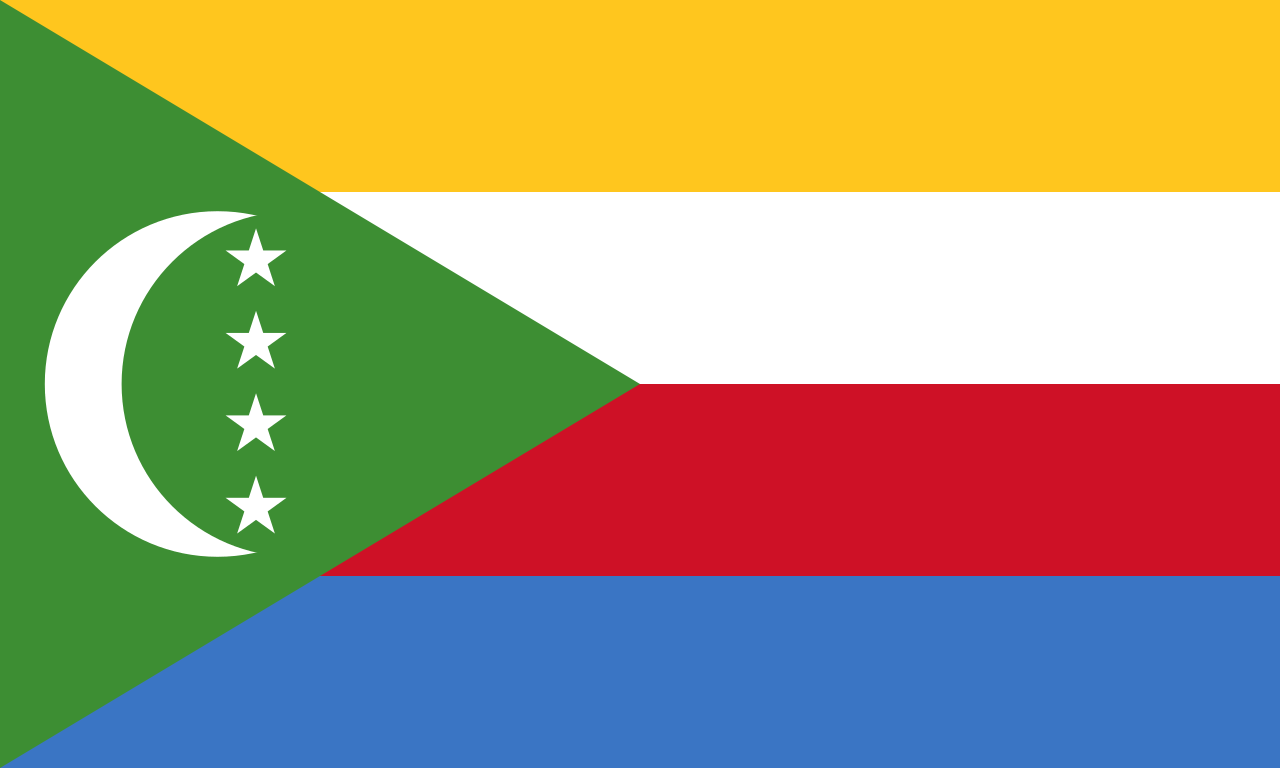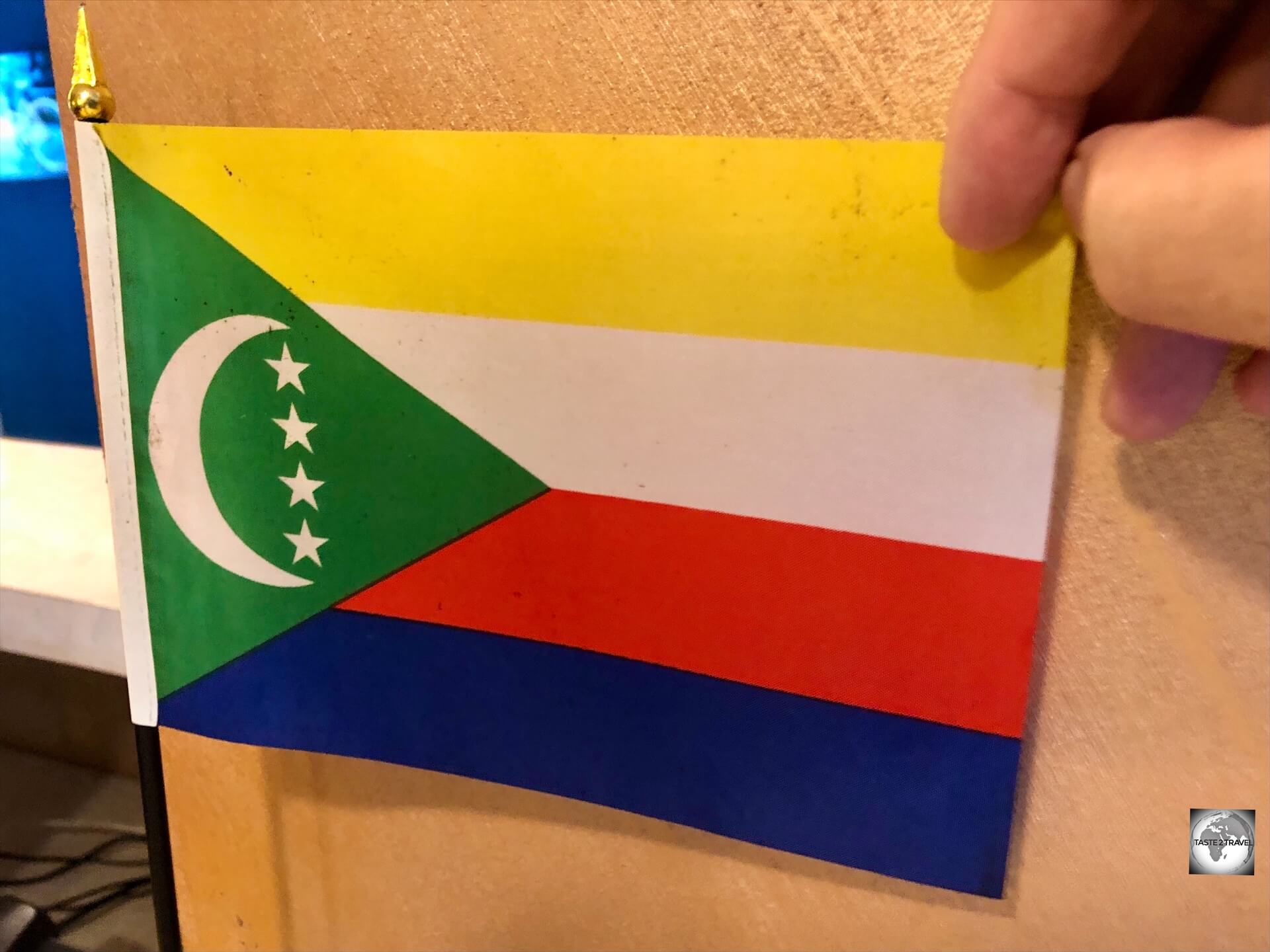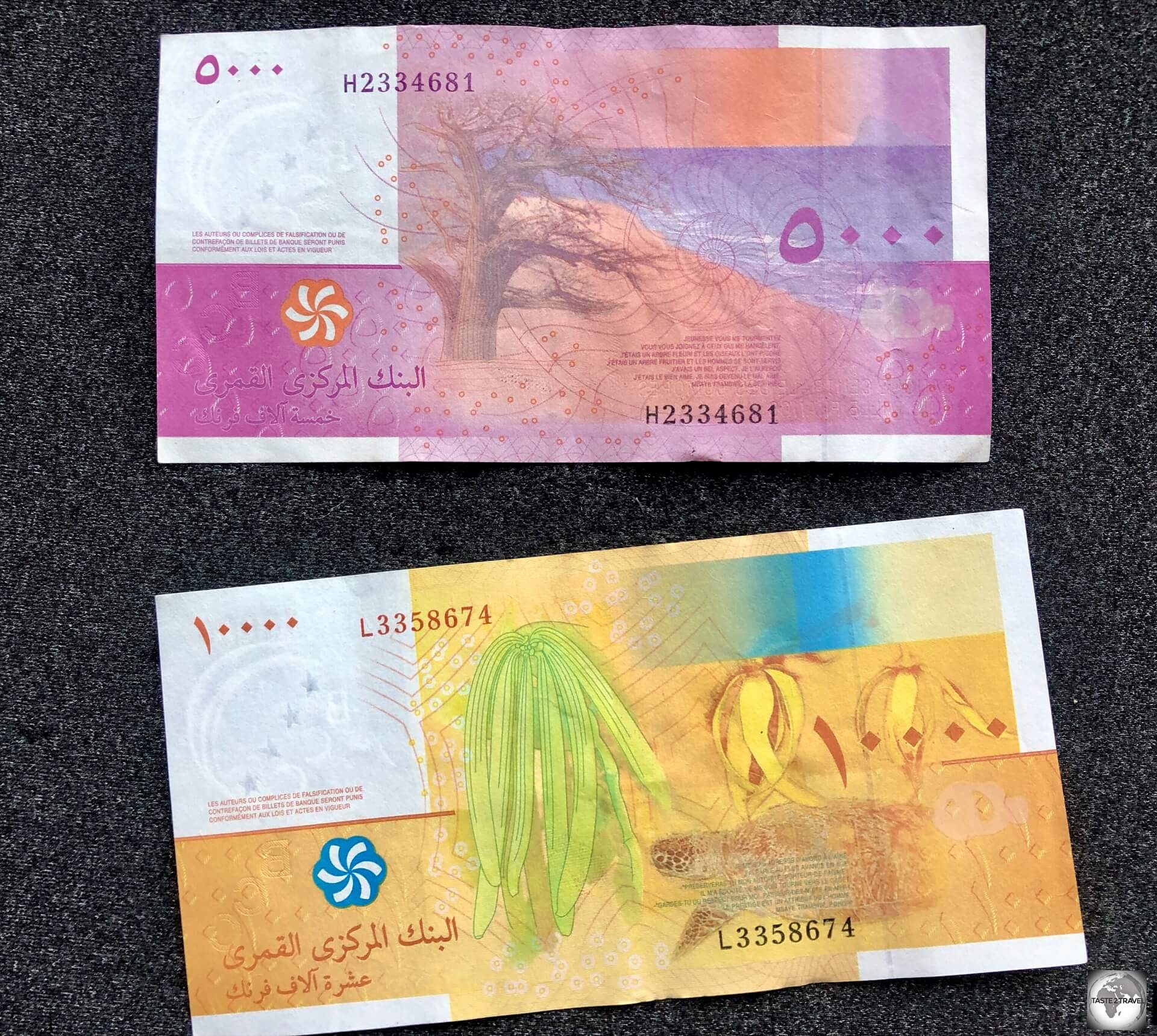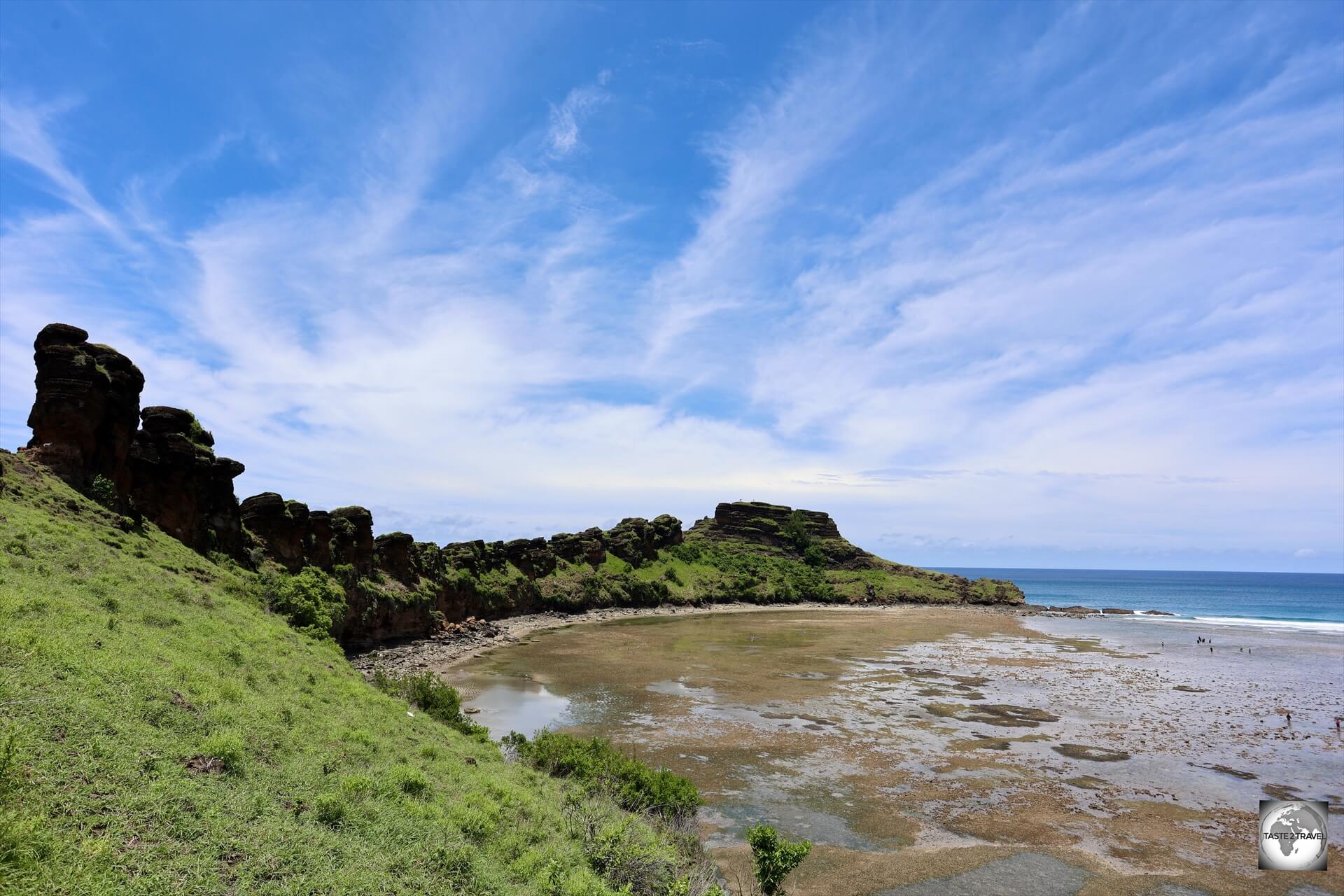Comoros Travel Guide
This is a Comoros Travel Guide from taste2travel.com
Date Visited: February 2024
Introduction
Tucked away in the azure waters of the Indian Ocean, off the coast of east Africa, the Comoros Islands beckon travellers with their untouched beauty and captivating allure.

An octopus collector on Grand Comore, hunting for octopus at low tide.
Largely undeveloped and totally off the tourist radar, this unknown and hidden archipelago is a tapestry of volcanic landscapes, vibrant culture, and warm hospitality, waiting to be discovered.
The Comoros Islands, consisting of Grande Comore, Mohéli, Anjouan, and Mayotte, each offer a unique charm waiting to be explored.
The French administered Mayotte separately from the remainder of the Comoros beginning in 1975, when the three northernmost and predominantly Muslim islands of the Comoros declared independence, and the Muslim and Christian inhabitants of Mayotte chose to remain with France.
Mayotte Travel Guide

Mayotte, which is the most easterly of the four islands of the Comoran archipelago, is an overseas department of France, which is still claimed by the government of Comoros.
Having an outpost of the European Union located in close proximity to one of the poorest countries on the planet ensures that Mayotte is beset by a plethora of social issues which are the result of numerous Comoran refugees who travel illegally to the island by boat.
You can read more about this French outpost in my Mayotte Travel Guide.
The main island. Grande Comore, is home to the capital, Moroni, and the only international airport in the country.
The island is dominated by the towering Mount Karthala (2,361 metre / 7,746 feet), an active volcano which occasionally erupts, covering the island in jet-black lava boulders.

A view of Maloudja Beach on Grand Comore.
In between the black lava flows lie stunning, white sand beaches, which are lapped by the azure waters of the Indian Ocean.
Comoros is a true paradise which still remains largely undeveloped. While the neighbouring island nations of Seychelles and Mauritius have fine-tuned their tourism offering, tourism remains undeveloped on Comoros. There are just five hotels listed on Booking.com on the main island of Grande Comore.

Comoros is home to many large Baobab trees.
Beyond the natural beauty of the islands lies the heart of the Comoros – its people.
Comoros is a safe and welcoming destination.
The warm smiles of locals welcome you as you delve into the rich tapestry of Comorian culture, which has been influenced from centuries of trade with Africa, Arabia and Asia.

Despite the entire island being covered in black volcanic lava, there are plenty of white sand beaches on Grand Comore.
The Comoros Islands offer an authentic Indian Ocean travel experience that is as captivating as it is unforgettable.
It’s a destination which is ideal for intrepid travellers who seek to get off the well-worn tourist circuit, and of course for the country-counters who are determined to visit all 193 UN countries.
Location
The Comoros Islands are located about 320 km (200 mi) off the eastern coast of Africa, in close proximity to Tanzania, Mozambique and Madagascar.
An archipelago nation, the Comoros consist of four main islands.
- Grande Comore
- Mohéli
- Anjouan
- Mayotte (an overseas department of France, geographically part of the Comoros but politically distinct)

A view of Grande Comore Island, which is covered in black lava.
The islands are of volcanic origin, with Mount Karthala on Grande Comore being an active volcano and one of the tallest peaks in the Indian Ocean.
People
The people of the Comoros, known as Comorians (population: 820,000) are a diverse and culturally rich population with a unique ethnic blend of African, Arab, and Malagasy, which reflects the islands’ history of trade and settlement.
The official languages of the Comoros are Comorian, French, and Arabic. Comorian is widely spoken among the population, with different dialects spoken on each of the main islands.
Islam is the dominant religion in the Comoros, with the majority of Comorians adhering to Sunni Islam. The practice of Islam plays a central role in daily life, culture, and traditions.
Flag

The flag of the Comoros.
The flag of Comoros was officially adopted on January 7, 2002, following a national referendum. The current design was chosen to better reflect the unity, history, and aspirations of the Comorian nation.

A souvenir Comoran flag.
The flag design consists of a white crescent with four white five-pointed stars inside of a green triangle.
The flag has four stripes, representing the four main islands of the nation: yellow for Mohéli, white for Mayotte (a French department claimed by the Comoros), red for Anjouan and blue for Grande Comore.
The four stars on the flag also symbolise the four islands. The star and crescent, as well as the colour green on the flag, symbolise the main religion of the country – Islam.
Currency

The Comorian franc is the official currency of the Comoros.
The official currency of Comoros is the Comorian franc (FC), which has the currency code of KMF.
The Comorian franc is issued and regulated by the Central Bank of the Comoros, which is the country’s central monetary authority.
It is used for all financial transactions within the country, including daily purchases, business transactions, and banking operations.
Credit cards are rarely accepted on the Comoros.

A view of the obverse side of Comoran franc banknotes, which feature Arabic script.
Banknotes, which are printed by the Bank of France, are issued in denominations of 500 FC, 1,000 FC, 2,000 FC, 5,000 FC, 10,000 FC.
Coins are issued in denominations of 25 FC, 50 FC, 100 FC, 250 FC.
Credit Cards

In the few places on Comoros where credit cards are accepted, only Visa card is accepted.
Like so many countries in Africa, credit cards are rarely accepted on the Comoros. Cash is king!
This lack of credit card acceptance is due to the fact that 95% of Africans do not have a bank account and hence, do not own any plastic bank cards. All transactions are conducted in cash!
The only businesses which accept credit cards are a couple of the better hotels which deal with foreign tourists.
Throughout Comoros, whenever credit cards are accepted, only Visa card is accepted.
If you are using Mastercard, American Express or any other card, you will find your card is not accepted.
A very frustrating experience!

BFC bank in Moroni provides the one ATM in the Comoros which accepts Mastercard and American Express.
The one lifeline, for non-Visa card holders, is the single ATM which is installed at the Moroni branch of Banque Fédérale des Commerce (BFC), which is the main commercial bank on the Comoros Islands.
Because they are the main business bank for the country, they feel it is appropriate that they accept all major credit cards.
The only ATMs on Grand Comore are located in downtown Moroni.
There are no ATMs at the airport. It is essential to arrive on the Comoros with either EUR or USD cash!
Costs
Travel costs on Comoros are the highest of any country in eastern Africa!
Sample costs:
- Cappuccino? – I found nowhere on Comoros which offered barista-made coffee.
- Can of Coke/ Sprite: €1.50
- Small bottled water: €0.50
- Imported Beer: €7.50
- Meal at a mid-range restaurant: €10
- Meal at the Golden Tulip Hotel: €15
- Hotel room at the Golden Tulip Hotel: €130
- Daytrip tour with Adore Comore tour company: €80 per person (minimum of 2 people)
Tour Companies

My guide, from Adore Comore, at Lac Salé.
While on Grand Comore, I toured the island with an excellent guide from the Adore Comore tour company.
The company offers a range of daytrips which are priced from €80 per person (minimum 2 pax).
As a single pax, I had to pay €160 for a day trip which makes for an expensive outing.

During our day trip, our car suffered a punctured tire which was not surprising considering the terrible condition of the roads.
Sightseeing
Grand Comore, also known as Ngazidja, is the largest and most populous island in the Comoros archipelago. It offers a diverse range of sights and attractions for visitors to explore.
The island is dominated by Mount Karthala, an active shield volcano and the highest point in the Comoros. It stands at approximately 2,361 metres (7,746 feet) above sea level.
Moroni

A view of Moroni harbour and the historic Friday Mosque.
Moroni, the capital of the Comoros, lies in the shadow of Mount Karthala, on the west coast of Grand Comore.
The iconic view of Moroni is of the (heavily polluted) harbour and the Friday Mosque (Mosquée de Vendredi), which was constructed in 1427, without a minaret. It wasn’t until 1921 that a minaret was finally added.
As the main commercial centre on the Comoros, chaotic Moroni is home to a bustling market.
Lac Salé (Salt Lake)

A view of Lac Salé, where the water colour fluctuates between blue, brown and green.
A highlight of Grand Comore is Lac Salé, or Salt Lake, a unique geological formation located on the north coast of Grand Comore.
The lake’s high salinity creates striking contrasts of colors, with the water colour fluctuating (throughout the day) between blue, brown and green.
The colour of the lake water contrasts strongly with the turquoise waters of the adjacent Indian Ocean.
Dos du Dragon

“Dos du Dragon,” or the dragon’s back, looks like a mythical creature, resting by the sea.
Located a short drive beyond the Salt Lake, Dos du Dragon, or the “dragon’s back” is a rocky protrusion jutting out into the Indian Ocean.
Mitsamiouli Beach

A view of beautiful Mitsamiouli Beach.
Located on the northwest coast of Grande Comore, beautiful Mitsamiouli Beach is home to a pretty stretch of white-sand, surrounded by black volcanic lava and backed by a line of palm trees.

A Comoran family, enjoying a day out at Mitsamiouli Beach.
The government of Qatar, through the Qatar National Hotels Company, is currently building a new beachside resort in Mitsamiouli.
For this reason, the road between the airport and Mitsamiouli has been completely resurfaced and is currently the best road anywhere in the Comoros.
Sada Beach

A view of Sada Beach at low tide.
Sada Beach is home to a small community of expat holiday houses.
Most of the large homes that line the coast are boarded up since most of the residents are only in-country for a few weeks at a time.
Giant Baobab Tree

The giant Baobab tree.
Located near the airport, a huge, hollow, Baobab tree makes for an interesting stop while driving along the west coast.

My guide, from Adore Comoros, providing a sense of scale for this giant Baobab tree.
A large opening at the base of the tree allows access into a lofty, hollow, chamber which provides an interesting perspective on the world.

A view inside the hollow of the giant Baobab tree.
Accommodation
There is a very limited number of accommodation options on the Comoros, with bookimg.com listing just 5 properties on Grande Comore.
Golden Tulip Hotel

The Golden Tulip Hotel offers the best accommodation on the Comoros.
The only international chain hotel on the Comoros is the Golden Tulip Hotel which offers the best accommodation in the country.
The hotel is located on the west coast of Grande Comore, 10 km south of the airport and 10 km north of the capital, Moroni.
A public taxi from the airport to the hotel costs 5,000 KMF (€10) while the hotel charges 15,000 KMF (€30) for an airport shuttle.
Apart from its comfortable rooms, the hotel offers a very good restaurant which attracts both guests and visiting locals who come for all sorts of functions and events.
The hotel offers the best restaurant on the island and the only conference/ meeting room facilities, which ensures a steady stream of corporate guests.

My spacious and comfortable room at the Golden Tulip Hotel, Comoros.
A standard room on booking.com costs around US$130 with payment options at the hotel limited to cash or Visa credit card.
The hotel does not accept Mastercard or American Express.
One way to stay at the hotel, and pay with any credit card, is to book a room through expedia.com and select the option to ‘Pay in Advance‘. This will allow you to pay with any credit card via Expedia.
The hotel offers spacious and comfortable, albeit slightly dated, rooms which overlook the palm-tree studded garden and unbeatable views of the Indian Ocean.

A view of the garden, and the Indian Ocean, from my room at the Golden Tulip Hotel.
The hotel also features its own private beach and a family of giant tortoises which act as lawn mowers, gradually grazing their way around the hotel lawn.

The lawn at the Golden Tulip Hotel is kept in good order thanks to a family of grazing tortoises.
Reverse Money Exchange:
Comoran francs cannot be exchanged outside of the country and it can be difficult to change excess francs back into hard currency at the end of your trip.
I was able to exchange excess francs, for both EUR and USD, at the reception desk at the Golden Tulip Hotel.
A great service for departing guests.
Hôtel La Grillade

A view of the Hôtel La Grillade, which is located a short drive north of Moroni.
Also located on the west coast, 1 km north of Moroni, the mid-range Hôtel La Grillade offers very average rooms for about €80 per night.
I would rate the hotel as 1-2 stars and not worth the money that is being charged.
Payment is either cash or Visa card only!
The hotel has a decent restaurant which offers reasonable food.
A public taxi from the airport to the hotel costs 5,000 KMF (€10) while the hotel charges 10,000 KMF (€20) for an airport shuttle.
Eating Out

Every day at low tide, hordes of locals search for octopus in tidal rock pools.
The cuisine of Comoros reflects influences from Africa, Arabia, Madagascar and beyond. As can be expected on an island nation, seafood dominates the diet with fish, octopus and lobster especially popular.
Golden Tulip Hotel

Breakfast, with a view of the Indian Ocean, at the Golden Tulip Hotel.
The outdoor, ocean-front, restaurant at the Golden Tulip Hotel is one of the most popular restaurants on Grande Comore.
The best breakfast, anywhere on Grande Comore, is served on the balcony of the restaurant, with a front-row seat overlooking the azure waters of the Indian Ocean.

A delicious, seared-tuna, salad, served at the Golden Tulip Hotel.
Specialties include lobster and a very tasty seared-tuna salad which is made from freshly caught tuna.
Hotel La Grillade

The restaurant menu at the Hotel La Grillade features locally caught lobster, which is very affordable at €12.
While the rooms at Hotel La Grillade are very average, the food served in the restaurant by the friendly staff is anything but average!
Their lobster meal, which costs just €12, is an absolute bargain.
I also recommend their fillet steak, which is served with a creamy pepper sauce! Delicious!
Highly recommended!
Sada Beach Restaurant

My lunch stop at Sada Beach during a trip to the north of Grande Comore.
During a trip to the north coast of Grande Comore with Adore Comoros, I had lunch at a rustic beachfront restaurant at Sada Beach.

My tasty, and spicy, freshly caught, tuna curry lunch at Sada Beach.
Owned by a Comoran couple, the husband used to work as a chef in a nearby resort, until the resort closed.
I was treated to a beautiful tuna curry with salad, rice, plantains and more. Very nice!
Visa Requirements

My Comoros Visa-on-Arrival (VOA) which was issued without fuss at Moroni International Airport.
The Visa Policy of Comoros is wonderfully simple.
All nationalities require a visa which can be purchased on arrival at Moroni International Airport.
Visas cost €30, or US$50, for stays of up to 45 days.
Free of charge visas are issued to transit visitors with a stay for a maximum of 24 hours
All visitors must hold a passport valid for 6 months and return or onward tickets.
My visa was issued, without fuss, by friendly immigration officers in about 10-minutes.
Getting There

Ethiopian Airlines flies daily from Addis Ababa (Ethiopia) to Moroni, via Dar es Salaam (Tanzania).
Air
All visitors arrive at Moroni International Airport, aka Prince Said Ibrahim International Airport (IATA: HAH), the only international gateway to the Comoros.
The airport is located on the west coast of Grande Comore, 20 km (12 mi) north of Moroni.
The following airlines provide service to/ from Moroni:
- Air Austral – flies to/from Saint-Denis de la Réunion
- Air Madagascar – flies to/from Antananarivo, Majunga
- Air Tanzania – flies to/from Dar es Salaam
- Egyptair – flies to/from Cairo, Dar es Salaam
- Ethiopian Airlines – flies to/from Addis Ababa, Dar es Salaam
- Ewa Air – flies to/from Dzaoudzi
- Kenya Airways – flies to/from Nairobi–Jomo Kenyatta
- Precision Air – flies to/from Anjouan, Dar es Salaam
Airport Transport
Most hotels provide airport shuttle services, although they charge from €20-30.
Taxis meet all flights with a ride into Moroni costing €10 (5,000 KMF).
Getting Around

Roads on Comoros are generally diabolical.
Public transport on Comoros consists of shared taxis which charge around 500 – 1,000 KMF for trips along the west coast.
Taxis, which are old, dirty and in poor condition can be hailed on the side of the road.

A Comoran License plate.
Roads on the island are in terrible condition with no investment being made in infrastructure at any stage since independence was gained in in 1975.
That’s the end of my Comoros Travel Guide.
If you wish to comment on this guide or contact me, you can do so using the comment form below or via the ‘Contact’ page.
Safe Travels!
Darren
Further Reading
Following is a list of my travel content from the region:
- Maldives Travel Guide
- Mauritius Travel Guide
- Mayotte Travel Guide
- Reunion Travel Guide
- Seychelles Travel Guide
Author: Darren McLean
Darren McLean is an Australian, full-time, digital nomad who has spent 37 years on a slow meander around the globe, visiting all seven continents, 189/ 193 UN countries and 240/ 251 UN+ countries and territories.
He founded taste2travel to pique one’s curiosity and inspire wanderlust.





